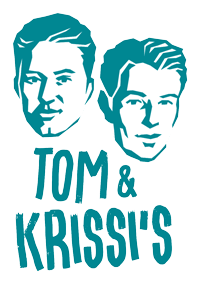Lactose intolerance
Lactose Intolerance – Milk Sugar Intolerance
After consuming milk and dairy products, many people experience symptoms such as abdominal pain, bloating, or diarrhea. In these cases, there is usually an intolerance to lactose, or milk sugar – lactose intolerance. Approximately 5 to 20% of people in Europe are estimated to be unable to tolerate lactose, while in other parts of the world such as Africa or East Asia, 65 to over 90% of people suffer from lactose intolerance.
What is Lactose Intolerance?
Lactose is a disaccharide (double sugar) because it consists of a solid combination of the two molecules D-galactose and D-glucose, which are only split into glucose and galactose in the small intestine by the enzyme lactase.
Causes of Lactose Intolerance
Lactose intolerance is due to the lack of the enzyme lactase. In regions where milk is traditionally a staple food, lactase production is genetically encoded and a deficiency is more the exception or caused by medications or intestinal diseases. In areas where milk is not traditionally part of the diet, such as in Asia, genetic programming does not include lactase enzyme production.
Without this enzyme, which was originally intended by nature for the digestion of breast milk during infancy, lactose cannot be broken down into its two monosaccharides, glucose and galactose, in the small intestine. As a result of this lack of breakdown, digestion mainly produces gases, which cause bloating or a bloated stomach. Consequently, abdominal pain, cramps, a feeling of fullness, and subsequent diarrhea can occur.
Symptoms
When a person suffers from lactose intolerance, unsightly symptoms occur after consuming lactose-containing products due to incorrect or inadequate digestion of lactose and the gases formed in the intestine as a result.
Symptoms include:
- Abdominal pain
- Belly cramps
- Bloating
- Diarrhea
- Nausea
- Feeling of fullness
Diagnosis
An unequivocal diagnosis cannot be made solely based on the symptoms mentioned above, as other food intolerances and illnesses can also cause such complaints.
Nevertheless, a visit to a gastroenterologist, a specialist in gastrointestinal disorders, can help: there, as in the case of clarifying fructose intolerance, it can be determined by means of an H2 breath test whether the patient suffers from lactose intolerance.
Primary and Secondary Lactose Intolerance
Lactose intolerance can be divided into two different types: primary lactose intolerance (congenital) and secondary lactose intolerance (acquired, also called lactose malabsorption).
Primary Lactose Intolerance
If one suffers from the inherited form of lactose intolerance, symptoms occur at a very young age. During breastfeeding, an infant still produces sufficient amounts of the enzyme lactase to break down lactose and subsequently metabolize it without problems. When this period ends, the production of the necessary enzyme lactase ceases until finally there are no longer enough of these enzymes present in the body to digest lactose without discomfort. This usually occurs no earlier than the fifth year of life.
Secondary Lactose Intolerance:
In secondary lactose intolerance, unlike primary lactose intolerance, it is not a genetically determined problem with the enzyme lactase. Due to an intestinal disease, such as that which can arise from celiac disease, the intestine no longer generates sufficient amounts of the enzyme lactase. If the underlying intestinal disease is treated and cured, the metabolism of lactose can normalize.
Treatment
If primary lactose intolerance is diagnosed, the next question is how to deal with lactose intolerance in the future. Ideally, this involves care and advice from a dietitian. All too often, all dairy products are hastily removed from the diet. In fact, strict avoidance of dairy products is actually harmful to health because dairy products are important sources of calcium, the supply of which could be insufficient without dairy products. In addition, avoiding dairy products can greatly reduce quality of life if such foods were previously enjoyed. For this reason, a well-thought-out and lactose intolerance-adapted diet plan must be drawn up.
Diet for Lactose Intolerance
The establishment of a long-term dietary plan for lactose intolerance should be done in three phases. In the first phase, fresh milk products are replaced with lactose-free alternatives and other lactose-containing products are greatly reduced. Dairy products that are aged longer, such as cheese, as well as butter, contain very little lactose and can be included in the diet from the beginning. In this phase, similar to the therapy for fructose intolerance, food selection and eating habits are continuously optimized.
After a maximum of 10-14 days, small amounts of lactose can be introduced into the daily diet. In this phase, the daily dose of lactose is gradually increased to determine one's individual tolerance level.
If the second phase is successfully completed, the third phase is entered with the aim of achieving long-term symptom-free and complaint-free nutrition with simultaneously high quality of life.


